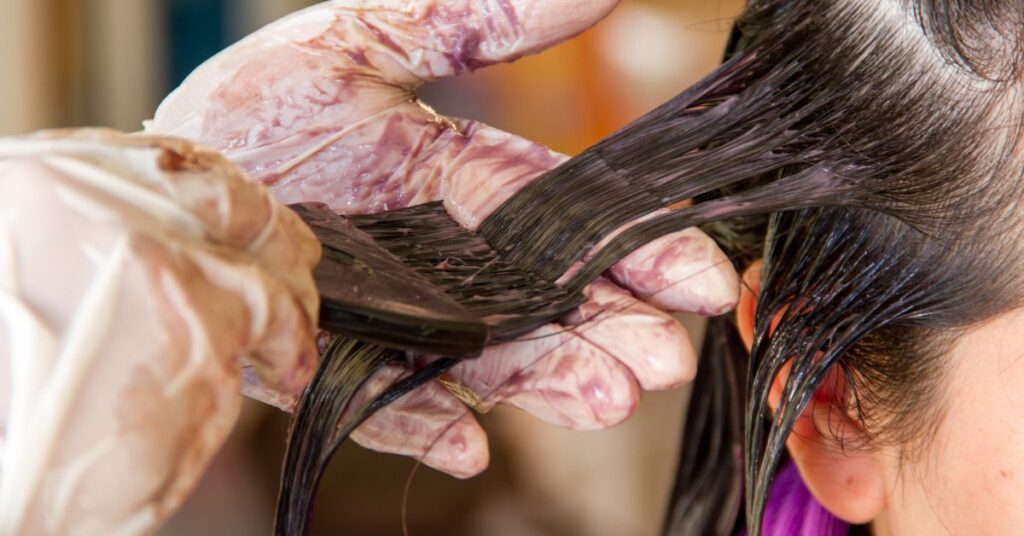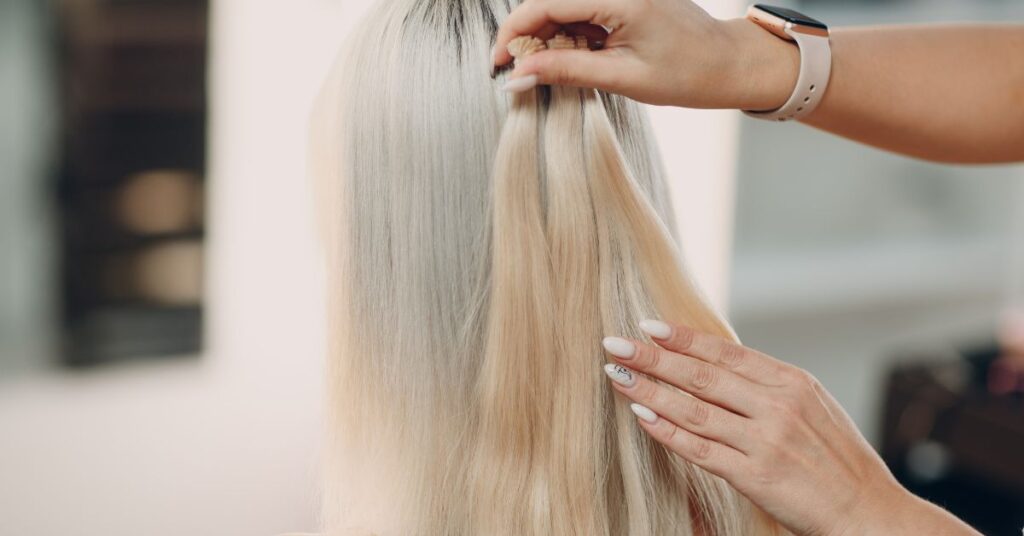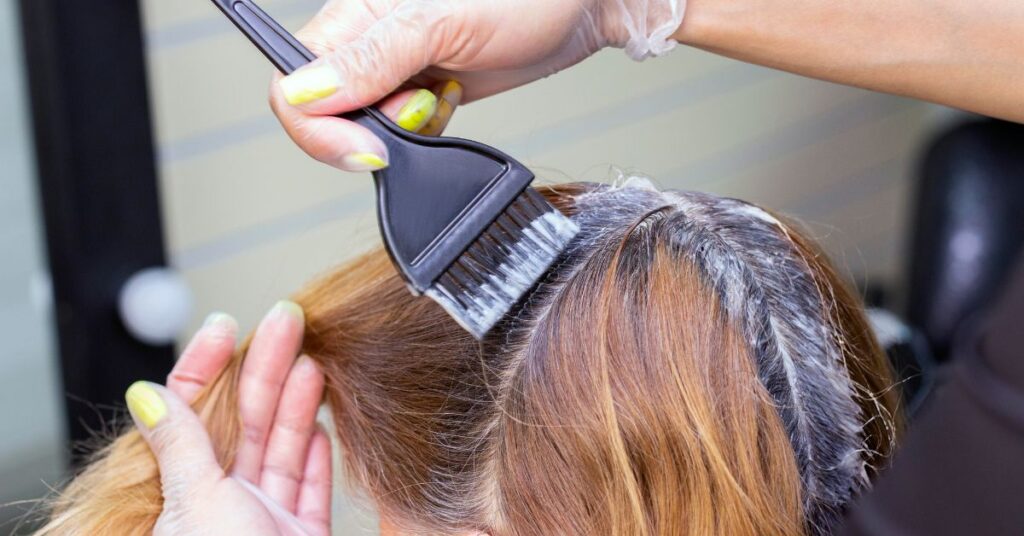
Introduce
Welcome to our guide on achieving the perfect hair color! Whether you’re looking to refresh your current shade or try something completely new, this article will provide you with eight essential tips for getting the exact hair color you want. From understanding your hair’s natural color to choosing the right shade and mastering application techniques, we’ve got you covered. Let’s dive in and unlock the secrets to achieving your dream hair color.
Understanding Your Hair’s Natural Color
Before diving into the world of hair coloring, it’s crucial to understand your hair’s natural color. Your current hair color serves as the foundation for any color changes you wish to make. Take note of your hair’s undertones, whether they’re warm, cool, or neutral. This understanding will help you select a hair color shade that complements your natural tones and enhances your overall look.
Additionally, consider the texture and porosity of your hair. Fine hair may absorb color differently than coarse hair, while porous hair may require special attention during the coloring process. By assessing these factors, you can make informed decisions about the type of hair color and treatment that will best suit your hair’s unique characteristics.

Choosing the Right Hair Color Shade
Selecting the perfect hair color shade is essential for achieving the look you desire. Here are some factors to consider when choosing the right shade:
- Skin Tone: Your skin tone plays a significant role in determining which hair color shades will complement your complexion. Warm skin tones typically look best with hair colors like golden blonde, caramel brown, or copper red, while cool skin tones may suit ash blonde, cool brown, or burgundy hues. If you have a neutral skin tone, you have the flexibility to experiment with a wide range of colors.
- Eye Color: Consider your eye color when selecting a hair color shade. Certain hues can enhance the natural beauty of your eyes and create a harmonious overall appearance. For example, warm hair colors like honey blonde or rich chestnut may bring out the warmth in brown eyes, while cool tones like platinum blonde or ash brown can make blue eyes pop.
- Lifestyle and Maintenance: Think about your lifestyle and how much time and effort you’re willing to dedicate to hair maintenance. Some hair colors require more frequent touch-ups to maintain their vibrancy, while others may offer lower maintenance options. Choose a shade that aligns with your lifestyle and maintenance preferences.
- Personal Style: Consider your personal style and aesthetic preferences when selecting a hair color shade. Are you drawn to bold, statement-making colors, or do you prefer more natural-looking hues? Think about how your new hair color will complement your overall style and enhance your confidence.
- Consultation with a Professional: If you’re unsure about which hair color shade to choose, consider scheduling a consultation with a professional hairstylist. They can assess your hair type, skin tone, and personal preferences to recommend the perfect shade that suits you best.
Preparing Your Hair for Coloring
Properly preparing your hair before the coloring process is essential for achieving optimal results and maintaining hair health. Here’s how to prepare your hair for coloring:
- Clarify Your Hair: Before coloring, it’s crucial to remove any product buildup, excess oils, and impurities from your hair. Use a clarifying shampoo to thoroughly cleanse your hair and scalp, ensuring that the color will apply evenly and penetrate the hair shaft effectively.
- Conditioning Treatment: While it’s essential to clarify your hair, you also want to ensure that it remains hydrated and nourished. Prior to coloring, consider using a deep conditioning treatment to replenish moisture and strengthen your hair. This will help minimize damage and enhance the vibrancy of your new hair color.
- Trimming Split Ends: If your hair has split ends or damage, consider getting a trim before coloring. Removing split ends will improve the overall health and appearance of your hair, allowing the color to take more evenly and last longer.
- Protective Measures: If you have sensitive skin or scalp, consider applying a protective barrier, such as petroleum jelly or a specialized barrier cream, along your hairline and ears to prevent staining from the hair dye.
- Patch Test: Before applying hair color all over your head, it’s essential to perform a patch test to check for any allergic reactions or sensitivities to the dye. Apply a small amount of the color mixture behind your ear or on your inner elbow and wait 24-48 hours to ensure there is no adverse reaction.
- Follow Instructions: Lastly, carefully read and follow the instructions provided with your chosen hair color product. Different products may have specific preparation and application techniques, so it’s essential to adhere to the manufacturer’s guidelines for best results.
Application Techniques for Precision
Mastering the application techniques is crucial for achieving precise and professional-looking results when coloring your hair. Here are some key techniques to consider:
- Sectioning: Divide your hair into manageable sections before applying the color. This will ensure that the color is applied evenly and thoroughly throughout your hair. Use clips or hair ties to secure each section and prevent overlap.
- Root Application: Start by applying the hair color to your roots, as they typically require the most coverage and processing time. Use a brush or applicator bottle to carefully apply the color to your roots, working in small sections to ensure thorough coverage.
- Mid-Lengths and Ends: After applying color to the roots, work the remaining color through the mid-lengths and ends of your hair. Use a comb or your fingers to distribute the color evenly, ensuring that every strand is coated.
- Blend and Feather: To create a seamless transition between your natural hair color and the new shade, blend and feather the color at the roots. This will help prevent harsh lines or demarcations and create a more natural-looking result.
- Avoid Overlapping: Be cautious not to overlap the color onto already colored or processed hair, as this can lead to uneven color and potential damage. Use a barrier cream or foil to protect previously colored sections while applying color to new growth.
- Processing Time: Follow the recommended processing time specified on the hair color product. Overprocessing can result in damage and color fading, while underprocessing may lead to uneven color or lack of coverage. Use a timer to ensure accuracy and consistency.
- Check for Evenness: After applying the color, take a moment to check for any missed spots or uneven application. Use a mirror and natural lighting to inspect your hair from different angles, touching up any areas that require additional color.
- Rinse and Condition: Once the processing time is complete, rinse your hair thoroughly with lukewarm water until the water runs clear. Follow up with a color-safe conditioner to lock in moisture and seal the cuticle, leaving your hair soft, shiny, and vibrant.
Timing and Processing for Desired Results
Understanding the timing and processing of your hair color is crucial for achieving your desired results. Here’s what you need to know:
- Follow Instructions: Always follow the instructions provided with your chosen hair color product regarding processing time. The recommended time will vary depending on the type and brand of color you’re using, as well as your desired outcome.
- Hair Texture and Porosity: Take into account your hair’s texture and porosity when determining processing time. Fine or porous hair may absorb color more quickly, while coarse or resistant hair may require longer processing times. Adjust the timing accordingly to achieve uniform color saturation.
- Patch Test: During the processing time, periodically check a small section of hair to monitor the color development. This will allow you to gauge how quickly your hair is processing the color and whether adjustments need to be made.
- Color Depth and Intensity: The longer you leave the color on your hair, the deeper and more intense the resulting color will be. If you’re aiming for a subtle change or lighter shade, consider reducing the processing time to achieve your desired level of color.
- Avoid Overprocessing: Be cautious not to leave the color on your hair for longer than the recommended processing time, as overprocessing can lead to damage, dryness, and color fading. Set a timer to ensure that you remove the color promptly once the processing time is complete.
- Rinse Time: After the processing time is up, rinse your hair thoroughly with lukewarm water until the water runs clear. It’s essential to remove all traces of the color to prevent staining and ensure the integrity of your hair.
- Post-Color Treatment: Follow up with a color-safe conditioner or treatment to nourish and hydrate your hair after coloring. This will help seal the cuticle and lock in the color, leaving your hair soft, shiny, and vibrant.

Conclusion
In conclusion, achieving the exact hair color you want requires careful consideration, preparation, and execution. By understanding your hair’s natural color, choosing the right shade, preparing your hair adequately, mastering application techniques, and timing the processing correctly, you can achieve stunning results that enhance your overall look. Whether you’re refreshing your current color or trying something entirely new, following these tips will help you achieve the hair color of your dreams while maintaining the health and integrity of your hair. Remember to consult with a professional stylist if you’re uncertain or seek guidance along the way. With patience and attention to detail, you can confidently achieve the perfect hair color that reflects your unique style and personality.read more
FAQs (Frequently Asked Questions)
1. How often should I color my hair?
- The frequency of hair coloring depends on various factors such as your desired shade, hair growth rate, and maintenance preferences. Generally, most people color their hair every 4-6 weeks to cover roots and maintain color vibrancy.
2. Can I color my hair at home, or should I visit a salon?
- Whether you choose to color your hair at home or visit a salon depends on your comfort level, experience, and desired outcome. If you’re new to hair coloring or seeking a significant change, it may be beneficial to consult with a professional stylist who can provide expert advice and ensure optimal results.
3. How can I maintain my hair color between salon visits?
- To maintain your hair color between salon visits, use color-safe hair care products, avoid excessive heat styling, and minimize exposure to chlorine and sunlight, which can cause color fading. Additionally, consider using color-depositing shampoos and conditioners to refresh your color and enhance vibrancy.
4. Will coloring my hair damage it?
- While hair coloring can temporarily alter the hair’s structure and texture, modern hair color formulations are designed to minimize damage and maintain hair health. However, frequent or improper coloring practices can lead to dryness, breakage, and damage. It’s essential to follow proper application techniques, use quality products, and prioritize hair care to minimize damage.
5. How can I fix a hair color mistake?
- If you’re unhappy with the results of your hair color, there are several options for correction. You can visit a professional stylist for color correction services, use color-removing products to strip unwanted color, or wait for the color to fade naturally over time. It’s essential to seek professional advice to avoid further damage or color mishaps.
6. Can I color my hair if it’s damaged or chemically treated?
- Coloring damaged or chemically treated hair requires extra caution to prevent further damage. It’s essential to assess the condition of your hair and consult with a professional stylist to determine the best course of action. Depending on the extent of damage, your stylist may recommend treatments to restore hair health before coloring.

